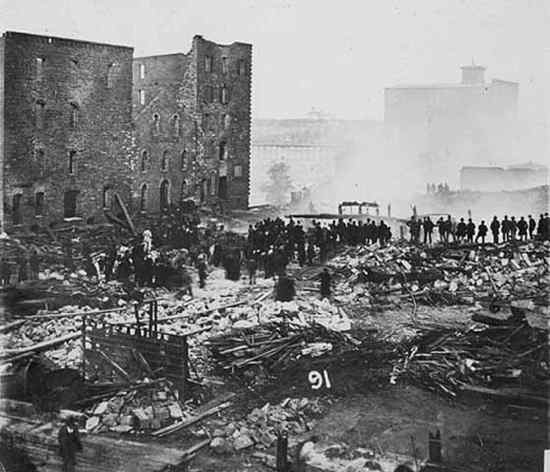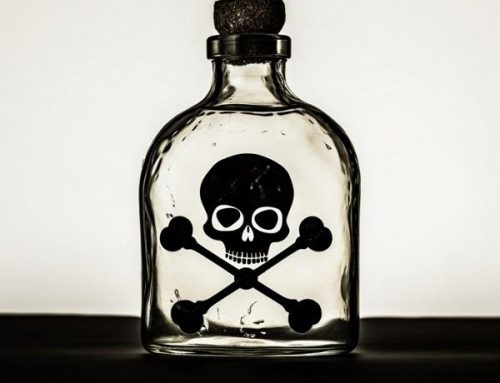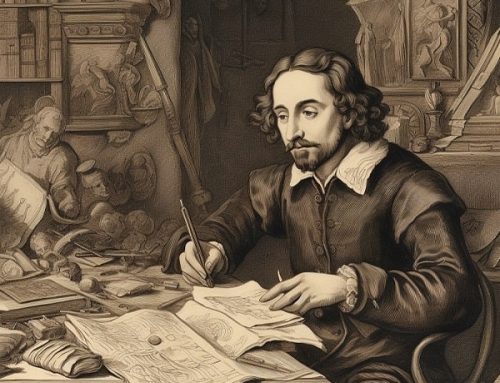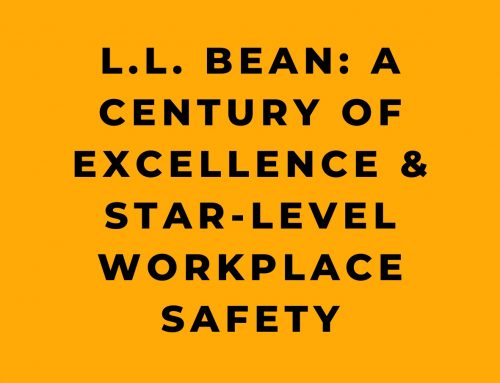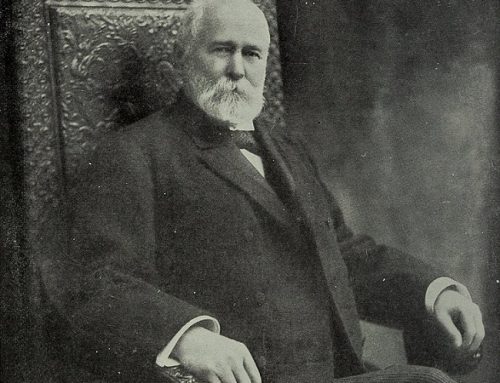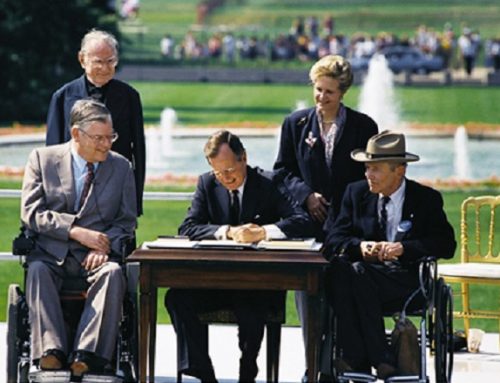The American workplace was incredibly unsafe in the 19th century. For example, over 1,000 workers died building the Erie Canal. Railroads were also very dangerous places for many workers. Long after European railroads had developed newer technologies that killed fewer workers, American railroad operators resisted changes that would save lives, especially around connecting cars. There was always the constant risk of factory fires, unsafe machinery, lead poisoning, and all manner of ways you could die on the job.
The Pemberton Mill Collapse, the image above, is one of many incidents in Massachusetts which caused people to rethink safety in the workplace. On Tuesday afternoon January 10, 1860, the Pemberton Mill in Lawrence buckled and crashed, killing dozens instantly and trapping the workers inside. The five-story Pemberton Mill, built-in 1853 in Lawrence, was financed by John A. Lowell and his brother-in-law J. Pickering Putnam, who sold the mill to George Howe and David Nevins during a financial downturn. Howe and Nevins jammed new machinery into the building, hired more workers, and made it profitable. The weight of the machinery exceeded the design capacity of the building, and steel plates were welded to the beams and girders by the new owners. Up to 145 people, mostly Irish and Scotch female workers, are believed to have been killed by the collapse and subsequent fire. There were also young children. Almost 300 more were injured. The Pemberton Mill collapse is the worst industrial accident in Massachusetts history.
The Boston Journal reported:
“The moans and cries for help of those in the ruins whose lives had not been immediately crushed out, mingled with an alarm rung out by the factory bells, called almost the entire community to the spot. Darkness lent additional horror to the scene, for while a thousand hands were ready to rescue it was impossible to know whence the calls for assistance came.”
In response to these poor working conditions, Massachusetts passed the first factory safety and health law in the United States in 1877 and established an official inspection force in 1879 that visited workplaces. The Factory Acts borrowed heavily from the general provisions of similar British laws. It provided for the general inspection of factories and public buildings. It also contained provisions relating to dangerous mechanical equipment, such as belting, shafting, gearing, and drums which the legislature insisted must be securely guarded, and that no machinery other than steam engines should be cleaned while running. The question of ventilation and cleanliness was also addressed. Dangers connected with hoistways, elevators, and well-holes were minimized by their protection by sufficient trap-doors, while fire escapes were made mandatory on all establishments of three or more stories in height. They also mandated that main doors, both inside and outside, of manufacturing establishments, as well as those of churches, schools, town halls, theatres, and every building used for public assemblies, should open outwardly whenever the factory inspectors of Massachusettes deemed it necessary. These provisions remain on the books in Massachusetts to this day.
Other Northern industrial states soon followed and fourteen states had similar factory acts on their books by 1897. Ten of those states gave their inspectors authority to require guarding of machinery. Eight states banned the cleaning of moving machinery by women or children. Ten states required guarding of elevator openings. Eight required regulation of ventilation and sanitary conditions. Seven states required exhaust fans for dust and fumes. Eight states required reporting of accidents. In addition, many inspectors enforced child labor laws, wage payment laws, and other requirements not related to safety and health. Initially, six of the 14 states gave the existing state bureaus of labor the duties of inspecting. The others provided separate departments for factory inspectors. Eventually, most labor bureaus were relieved of this duty. In addition to general factory laws, numerous specialized laws were passed applying in such areas as mining, sweatshops, bakeries, and construction.


